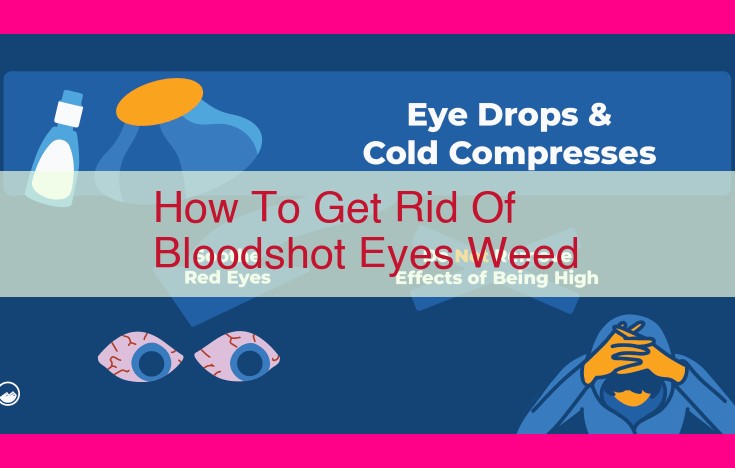Red Eye: Causes, Symptoms, And Effective Treatment Options

Cannabis use, smoking, and certain environmental factors can cause red, bloodshot eyes. Red eye is often a symptom of underlying conditions like conjunctivitis, dry eye syndrome, or glaucoma. Strategies for managing red eye include quitting smoking, managing stress, and getting enough sleep.
Common Red Eye Conditions: A Comprehensive Guide
Experiencing red, irritated eyes can be distressing. Understanding the underlying causes is crucial for effective treatment. Here are some common red eye conditions, their symptoms, and what triggers them:
Conjunctivitis (Pink Eye)
Conjunctivitis, commonly known as pink eye, is an inflammation of the conjunctiva, the clear membrane that covers the white part of your eye and lines your eyelid. It is highly contagious and can result from bacteria, viruses, or allergies. Symptoms include redness, itching, tearing, and a gritty sensation.
Dry Eye Syndrome
Dry eye syndrome occurs when your eyes don’t produce enough tears or your tears evaporate too quickly, leaving your eyes dry, irritated, and burning. Contributing factors include hormonal changes, certain medications, and environmental conditions like air conditioning or wind.
Glaucoma
Glaucoma is a serious eye condition that damages the optic nerve, leading to progressive vision loss. It is often caused by increased pressure inside the eye due to impaired fluid drainage. Symptoms include severe eye pain, blurred vision, and halos around lights.
Inflammatory Eye Conditions
Inflammatory eye conditions encompass various disorders that cause inflammation of the eye’s structures. They can range from mild to severe and may include uveitis (inflammation of the uvea), iritis (inflammation of the iris), and episcleritis (inflammation of the episclera). Symptoms vary depending on the specific condition but commonly include redness, pain, light sensitivity, and blurred vision.
Understanding the Causes of Red Eye: Beyond Common Infections
While red eyes can often be a symptom of infections like conjunctivitis (pink eye) and dry eye syndrome, they can also be caused by various contributing factors, including lifestyle habits and environmental influences.
Cannabis Use and Ocular Redness
Cannabis consumption is notorious for causing bloodshot eyes. The active ingredient in cannabis, tetrahydrocannabinol (THC), relaxes the muscles around the blood vessels in the eyes, leading to their dilation and increased blood flow. This dilation gives the eyes a reddish appearance.
Smoking and Eye Irritation
Smoking tobacco or inhaling secondhand smoke can have detrimental effects on eye health. The irritating chemicals in cigarettes can cause inflammation of the delicate conjunctiva, the clear membrane that covers the white part of the eyes. This inflammation can lead to redness, dryness, and other symptoms.
Environmental Irritants and Allergic Reactions
Environmental pollutants, such as smoke, dust, and pollen, can act as irritants to the eyes. They trigger an inflammatory response that results in redness, itching, and tearing. Additionally, allergic reactions to substances like pollen, pet dander, and certain beauty products can cause eye redness and swelling.
Other Contributing Factors
Red eye can also be a symptom of underlying medical conditions such as glaucoma, which is characterized by elevated pressure within the eye. Certain medications, prolonged computer use, and excessive eye strain can also contribute to ocular redness.
Understanding the various factors that can contribute to red eye is crucial for proper diagnosis and treatment. By addressing these underlying causes, you can effectively alleviate redness and maintain healthy vision.
Effective Strategies for Managing Red Eye
Red eyes can be a common annoyance, affecting your appearance and overall comfort. While some cases may indicate underlying medical conditions, many instances of red eye can be attributed to lifestyle factors and environmental irritants. Embrace effective management strategies to alleviate this discomfort and restore clear, healthy eyes.
Quitting Smoking
If you’re a smoker, kicking the habit is an essential step towards managing red eye. The chemicals in cigarettes, particularly nicotine, constrict blood vessels, reducing blood flow to the eyes and causing redness. Quitting smoking not only improves eye health but also benefits your overall well-being.
Managing Stress
When you’re stressed, your body releases hormones like cortisol and adrenaline, which can dilate blood vessels, leading to red eye. Incorporate stress-reducing techniques into your routine, such as exercise, yoga, meditation, or spending time in nature. Managing stress effectively not only helps alleviate eye redness but also promotes overall health and well-being.
Getting Enough Sleep
Adequate sleep is crucial for eye health. During sleep, your eyes produce tears that help lubricate and protect them. Insufficient sleep can lead to dry eyes, which can cause irritation and redness. Aim for 7-9 hours of quality sleep each night, ensuring your eyes have ample time to rest and rejuvenate.
Other Practical Tips
In addition to the primary strategies mentioned above, consider incorporating these practical tips into your routine:
- Avoid excessive screen time: Staring at screens for extended periods can strain your eyes, contributing to redness. Take regular breaks and follow the 20-20-20 rule, where every 20 minutes, you look away at something 20 feet away for 20 seconds.
- Use artificial tears: If you experience dry eye symptoms, artificial tears can help lubricate your eyes and reduce redness. Consult an eye doctor for recommendations on the best type for you.
- Protect your eyes from the sun: Exposure to UV rays can irritate and damage your eyes. Wear sunglasses with 100% UVA/UVB protection when outdoors.
- Clean your contact lenses properly: Improper contact lens care can lead to eye infections, resulting in redness and discomfort. Follow your eye doctor’s instructions for cleaning and storing your lenses.
By implementing these strategies, you can effectively manage red eye, restore clear and comfortable vision, and promote overall eye health. Remember to consult with an eye doctor if you experience persistent or severe eye redness to rule out any underlying medical conditions.